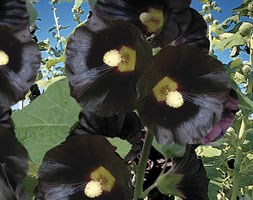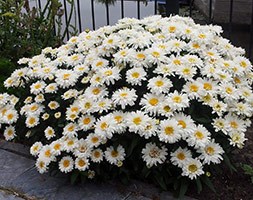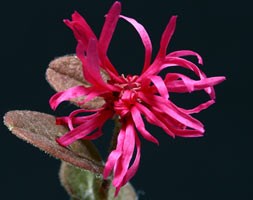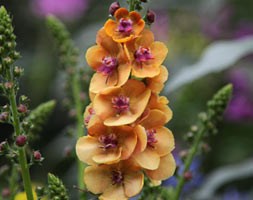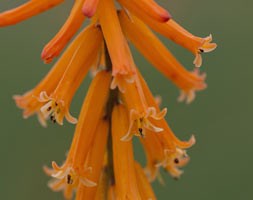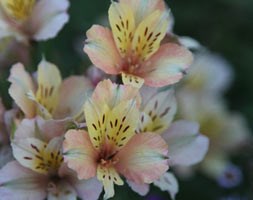Price reductions at Crocus
by Sarah - June 22nd, 2013.Filed under: Crocus, Price Reductions.
Reduced price on items today at Crocus
Alcea rosea ‘Watchman’ (hollyhock (Althea)) was £2.49 now £0.99
Position: full sun Soil: moderately-fertile, well-drained soil Rate of growth: fast-growing Flowering period: June and July Hardiness: fully hardy Towering stems rise above the hairy, lobed leaves from early summer bearing richly coloured, near-black, single flowers, each with a yellow throat. A magnificent biennial or short-lived perennial for a cottage garden setting. Garden care: Water well during dry spells. All hollyhocks are prone to rust. To prevent this, either spray with Bordeaux Mixture (organic) or Murphy Tumbleblite (non-organic) before the trouble appears, and repeat a couple of times during the summer. In autumn cut the plants back to 15cm (6in) from the ground.
Leucanthemum ‘Freak’ (shasta daisy) was £5.99 now £2.99
Position: full sun Soil: moderately fertile, moist but well-drained soil Rate of growth: average to fast Flowering period: June to September Hardiness: fully hardy Appearing over a long period from early summer, the anemone-centred flowerheads of this delightful new perennial have a somewhat ruffled appearance. Its compact habit, makes it suitable for patio pots as well as the front of a sunny border. Garden care: Divide congested plants in early spring or late summer. Protect young plants from slugs and snails. Cut down to the ground in autumn.
Loropetalum chinense f. rubrum ‘Fire Dance’ (loropetalum) was £7.99 now £3.99
Position: partial shade Soil: fertile, humus-rich, moist but well-drained soil Rate of growth: average Flowering period: February to April Hardiness: frost hardy (may need winter protection) Forming a bushy mound of evergreen purple foliage, this handsome shrub also produces pink, witch hazel-like flowers from late winter to mid-spring. These have a sweet scent and offer a pretty contrast to the colourful foliage. Originating from woodlands in China, Japan and Burma, they will benefit from a partially shaded spot with protection from the worst of the winter weather. Garden care: Requires minimal pruning, but lightly trim after flowering to encourage bushy growth.
Verbascum ‘Clementine’ (mullein) was £7.99 now £3.99
Position: full sun Soil: poor, well-drained, alkaline soil Rate of growth: average Flowering period: July to September Hardiness: fully hardy (but short-lived) Bred and selected by the National Collection holders of Verbascum, Vic Johnstone and Claire Wilson, ‘Clementine’ was first launched at the Hampton Court Flower Show in 2003. It is an elegant and architectural plant, which is said to be more reliably perennial than many of the other Verbascums. The brightly coloured flowers are held on well branching stems, and it makes a great addition to a mixed or herbaceous border. It will perform best in well-drained neutral or alkaline soil in sun or dappled shade. Garden care: Cut old flowering stems to ground level throughout the season to promote further flushes of flowers. Cut off dead or dying foliage from basal rosettes to allow good air circulation. Regularly pick off mullein moth caterpillars from the foliage to prevent very holey foliage!
Kniphofia triangularis subsp. triangularis ‘Light of the World’ (red hot poker) was £7.99 now £3.99
Position: full sun or partial shade Soil: fertile, humus-rich, moist, well-drained soil Rate of growth: average Flowering period: August to September Hardiness: fully hardy A deciduous perennial with arching, grass-like foliage and slender spikes of tubular orange flowers. Blooming in late summer and autumn, it will provide valuable colour to prairie or cottage style planting schemes. Garden care: In autumn remove and compost the faded, flower spikes and apply a deep, dry mulch around the crown of the plant. Divide and re-plant overcrowded colonies in spring.
Alstroemeria Inca Ice (‘Koice’) (Peruvian lily) was £7.99 now £3.99
Position: full sun or partial shade Soil: fertile, moist, well-drained soil Rate of growth: slow growing to average Flowering period: June and July Other features: contact with the foliage may cause skin irritation Hardiness: fully hardy The smaller inner petals of the pale apricot flowers, have a yellow flush and a sprinkling of brownish red streaks. A superb plant for the herbaceous border, where it will produce an abundance of flowers from early summer to autumn. Garden care: Newly planted Alstroemerias should be given a very generous 20cm (8″) deep mulch of chipped bark in their first winter to help the plants become established. In subsequent autumns, provide a dry mulch of bracken or bark chippings will help protect the crowns. After flowering cut back the faded flower-stems, but make sure you always wear gloves when working with Peruvian lilies, as contact with the foliage may cause skin irritation.
Rosa banksiae rosea (rambling rose) was £19.99 now £14.99
Position: full sun Soil: fertile, humus-rich, moist, well-drained soil Rate of growth: average to fast-growing Flowering period: April and May Flower colour: rose pink Other features: small, pale green leaves Hardiness: frost hardy (needs winter protection) This beautiful rambling rose produces clusters of small, double, rose-pink flowers which have a delicious violet scent. Flowering earlier than many other roses (in April and May), it is best suited to a sunny site away from cold winds. Its slender near-thornless stems are ideal for training over an arch or pergola. Garden care: If planting in winter, choose a frost-free spell when the soil is not frozen. Roses are quite deep-rooted plants so dig a deep hole roughly twice as wide as the plants roots and mix in a generous amount of composted organic matter. A top-dressing of a general purpose fertiliser can be worked into the surrounding soil and we also recommend using Rose Rootgrow at this stage to encourage better root development. This is particularly important when planting into a bed where roses have previously been grown as Rose Rootgrow is said to combat rose sickness (aka. replant disease). Before planting you will also need to make sure that there is adequate support for the rose to grow onto. Remove the plants from their pots and gently spread out the roots before placing them in the centre of the hole. Try to ensure that the ‘bud union’ (the point where the cultivated rose has been grafted onto the rootstock, and from where the shoots emerge) is at soil level. You can judge this quite easily by laying something flat, like a spade handle or bamboo cane, across the top of the hole. When they are at the right height, back-fill the hole, firming the soil down gently before watering the plant well. Tie the stems to the support in and open fan shape and as new shhots emerge, tie these in horizontally. Water generously until well established, and apply a specialist rose fertiliser (following the manufacturers instructions) each spring. They will also benefit from a generous mulch of composted farmyard manure in spring, but make sure this is kept away from the stems. When your rose has filled the allotted space, one in three of the oldest stems can be cut right back to their base. In smaller areas, remove all the stems that have flowered, tie in new stems to replace them, and then shorten the side-shoots of the remaining stems by up to







